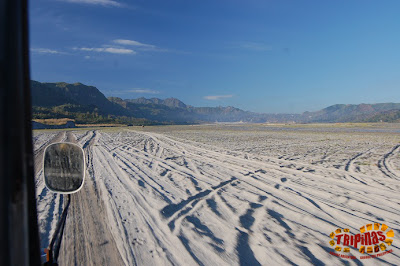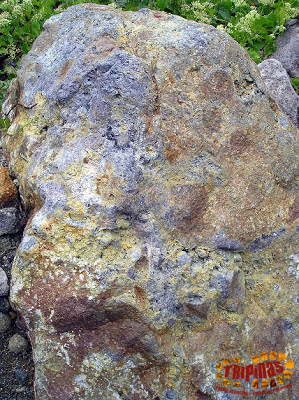Rocks found at present day Mount Pinatubo are mostly dacite with andesitic xenoliths. Andesite is a volcanic rock that is gray to black in color. This rock mostly comes from stratovolcanoes in a form of thick lava flows. Basalt lava is a volcanic rock that's typically hard and black in color. Due to its low silica content (under 50% of its weight), it flows fast which allows volcanic gases to escape without explosions. It is the most common rock type in the Earth's crust and ocean floor.
Dacite lava is most often light gray, but can be dark gray to black. It is one of the most common rock types associated with enormous Plinian-style eruptions. Dacite lava consists of about 63 to 68 percent silica (SiO2). Dacite generally erupts at temperatures between 800 and 1000°C. Common minerals include plagioclase feldspar, pyroxene, and amphibole. Dacite has a high crystal content. This combined with a high silica content makes it viscous and prone to explosive eruptions. Dacite was erupted from Mount St. Helens 1980-86
· Pumice is light and porous. It forms during explosive eruptions. Pumice is full of holes caused by expanding volcanic gases. It is composed of volcanic glass and minerals, and can form in all types of magma: basalt, andesite, dacite, and rhyolite.
· Obsidian is usually black in color though it can also be red or have a greenish tint. It is a dense volcanic glass, usually composed of rhyolite, rich in iron and magnesium.Obsidian is formed when the lava cools so quickly that crystals do not have time to grow. Obsidian fractures with very sharp edges. It was used by Stone Age cultures for making knives, arrowheads, and other tools where sharp edges are important.
· Rhyolite is a light-colored volcanic rock. It has a high silica content which makes it very viscous. This prevents gases from escaping causing rhyolite eruptions to be explosive. Rhyolite has a silica (SiO2) content greater than about 68 percent by weight. Common mineral types include quartz, feldspar and biotite. Rhyolite is erupted at temperatures of 700 to 850° C. Rhyolite eruptions often produce pumice or obsidian.
-source: http://www.rocksandminerals4u.com/example_of_igneous_rocks.html






